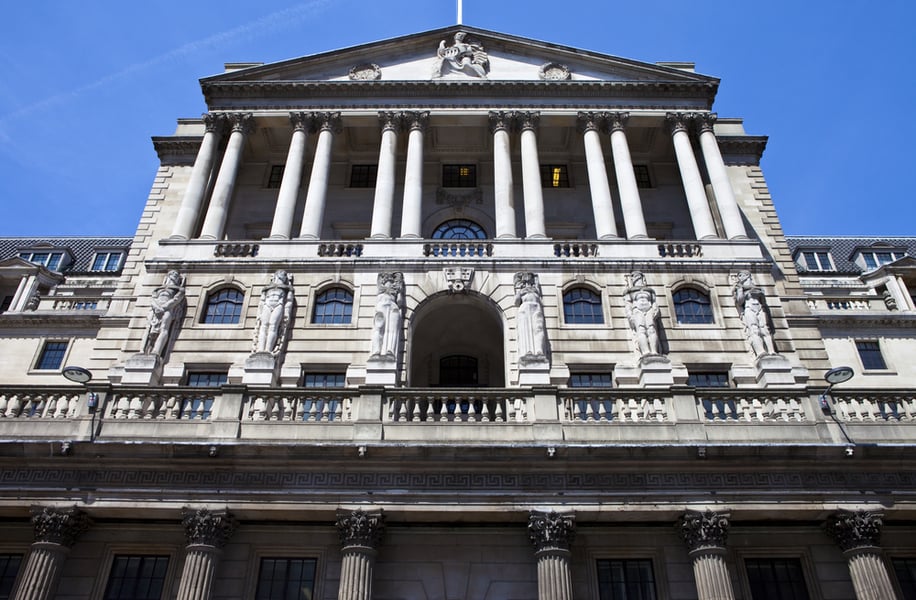An base rate increase back to 0.5% wouldn’t be too damaging and would signal to consumers that borrowing costs can’t be this low forever

Bob Hunt is chief executive of Paradigm Mortgage Services
The older you get, the quicker the years seem to go by, and the pace of change particularly in the mortgage market doesn’t appear to be letting up. Let’s cast our mind back to a decade ago – 10 years seems like a lifetime given what has happened over that period however it also feels within touching distance and, despite all that has gone on, that period remains in full focus certainly for all at Paradigm.
It’s particularly relevant for us as a business as during July 2007 we were planning for our launch later that year. Little did we know that by September – as we launched to market – there would be the beginnings of an economic and political earthquake with the collapse of the sub-prime market in the US, the run on Northern Rock here, the start of the credit crunch, and the subsequent bailout and recession which were to follow. What’s that saying about ‘timing is everything’?
I’m particularly proud of the fact that the strength of our proposition and the resilience of the mortgage market in particular have meant that such seismic events did not mean it was all over before we truly got started. We’ve certainly come a long way since then.
But, let’s go back to July 2007 because, as has been pointed out, this month was the last time that the Bank of England’s MPC raised interest rates. If you’d told us back then, that would have been the case, we would have thought you mad; indeed, we were probably all preparing for further rises, not a series of cuts down to 0.5% followed by last August’s further cut to 0.25%.
Indeed, that quarter per cent rise in July was the fifth since August 2006, taking Bank Base Rate up to 5.75% - and it was the 5-6% zone that is now perceived as being ‘normal’ for that time. Mortgage borrowers will now look at that rate and probably begin to have heart palpitations because I suspect that, despite increased stress rates and affordability measures put in place by the MMR, many would be severely struggling with their monthly payments were rates to get anywhere near this.
Which makes the following stat from the BSA even more interesting – apparently 2.5 million mortgage borrowers have never experienced a BBR rise, and you can understand why there might be a degree of trepidation, indeed slight panic, about the thought of rates rising again, although I don’t think anyone envisages BBR reaching 5.75% anytime soon.
Last month’s MPC meeting with its 5-3 vote in favour of keeping rates at 0.25% certainly set the cat amongst the pigeons in terms of the anticipation of a rate increase. Many commentators are now suggesting that BBR will be raised this year whereas previously the majority view seemed to be 2018 at the earliest. In the wake of that vote, and the realisation that it would only need one of those five MPC members to vote the other way before Mark Carney has to make a decision, there has been a degree of mixed messages coming out of Threadneedle Street.
Carney himself appeared to shut the door on any rate rise after the minutes of the meeting were released, however later he seemed to backtrack, suggesting rates might have to rise in order to curb inflationary pressures. No-one is denying this is a tricky problem as, with Brexit and the like causing great uncertainty and the feeling that many borrowers (both individuals and businesses) would not cope well with any rise, a poor decision now could cause great damage to the British economy.
However, there is also the suggestion that last August’s cut wasn’t necessarily warranted and an increase back to 0.5% - where BBR has been for most of the last decade it should be said – wouldn’t be too damaging and would signal to consumers that borrowing costs can’t be this low forever and they should cut their cloth accordingly. Indeed, consumer borrowing (not including mortgages) appears to be rising way too fast and the Bank might wish to curb this sooner rather than later.
It presents a tricky conundrum, but certainly one that mortgage advisers should be able to make the most of, as borrowers seek advice and insight into how they can ensure their monthly mortgage payments are certain and/or that they can move away from highly uncompetitive rates. Let’s not forget that, according to the CML, 10 years ago more than a million borrowers were switching to get a better deal; in 2016 that figure was 384,000.
Now, we know that it’s harder to get a mortgage for some people and they may have to stick with what they get, plus these figures do not include product transfers with the same lender, but there are still millions of borrowers out there on SVRs. They, one would say, are ripe for change given their current rate will bear no relation whatsoever to the most competitive current products, let alone any passing similarity to BBR. A move in base rate is now more likely than ever, but it is a move from a very low base and the competitive levels of the market today knock those of 2007 into a cocked hat. The time for advisers to secure those clients and write that business is most definitely now.



